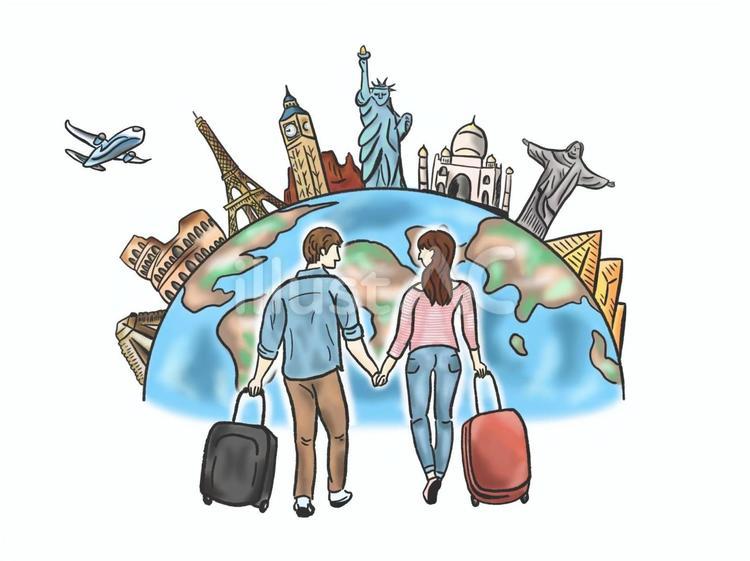 We thought it would be fun to share some key statistics (as of 2023-25) about U.S. citizens living a full-time travel / location-independent (“nomad”) lifestyle, that is, working while moving around the world without a permanent home base. These figures may help frame the broader picture for people like us who are making the world our home.
We thought it would be fun to share some key statistics (as of 2023-25) about U.S. citizens living a full-time travel / location-independent (“nomad”) lifestyle, that is, working while moving around the world without a permanent home base. These figures may help frame the broader picture for people like us who are making the world our home.
Size and growth of the community
-
As of mid-2023, about 17.3 million U.S. citizens described themselves as “digital nomads.”
-
In 2024, this number rose to around 18.1 million Americans.
-
To put that in perspective: in 2019, the number was about 7.3 million, and by 2020, around 10.9 million.
-
In global terms, there were about 35 million digital nomads worldwide as of 2024, and U.S. citizens accounted for a substantial share of that total.
Demographics & characteristics
-
Most U.S. nomads are in the millennial age range: for example, one source shows that about 47% of digital nomads globally fall in the 30-39 age bracket.
-
Educational attainment tends to be high: one estimate puts the figure at around 90% of digital nomads having completed higher education.
-
Income levels: for U.S. digital nomads, many earn between US$50,000 and US $100,000 annually; in one dataset, around 34% fall into that range.
-
Gender: one dataset indicates that about 56% of digital nomads in 2025 are men (i.e., ~44% are women).
Lifestyle & travel habits
-
One source notes that among digital nomads, choosing destinations is driven by cost of living, internet connectivity, and safety.
-
More extended duration stays appear to be increasing. For example, a study of U.S. Airbnb usage found that stays of ≥28 nights nearly doubled from pre-pandemic levels to around 2.2% of bookings in the post-pandemic period.
-
There is continued intent to “stick with it”: for example, one report states that 95% of nomads say they will definitely or maybe continue the lifestyle.
Implications and observations for full-time world travellers
-
The fact that ~18 million Americans are nomads suggests the lifestyle is now much more mainstream than the “fringe traveller” image of a decade ago.
-
High levels of education and earnings, in many cases, mean that this isn’t simply budget backpacking; many nomads are professionals who’ve decoupled location from work.
-
However, the rise in longer stays suggests that more of us are adopting a “slow-travel” or “base-once-in-a-place-for-a-month” pattern, rather than moving every few days.
-
Even so, while the data is strong for “digital nomads” (remote workers travelling/working), it is less precise for the subset who have no permanent home base anywhere in the world. Some may retain a home-country address, a bank account, or a tie to a residence. So if your definition is fully location-independent with zero permanent home, the stats are less finely tuned.
-
For people like us (U.S. citizens travelling full-time around the world), these figures suggest we are part of a growing community, but also that we might still be a smaller niche within it, given the broad definition of “digital nomad”.
Limitations & caveats
-
The term “digital nomad” covers a wide range, from someone who works remotely but keeps a home base to someone who constantly travels with no fixed residence. Many data sources don’t separate those nuances.
-
Self-reporting: the figures rely on how people self-identify as nomads. Some may include short-term remote travel rather than full-time global living.
-
Country-specific data: Most figures relate to U.S. citizens, but travel patterns, visa/tax burdens, and mobility may vary significantly for full-time world travellers.
-
Income/tax/legal implications: Many nomads may face complex tax, insurance, health care, and visa issues when living globally. The stats don’t fully reflect those burdens.
It’s interesting for us as long-term world travelers to see these stats. On October 31, we’ll have been traveling the world for 13 years. Out of curiosity, we’d love to hear from other nomads who’ve been traveling as long as we have.
Be well.
Photo from ten years ago today, October 23, 2015:

